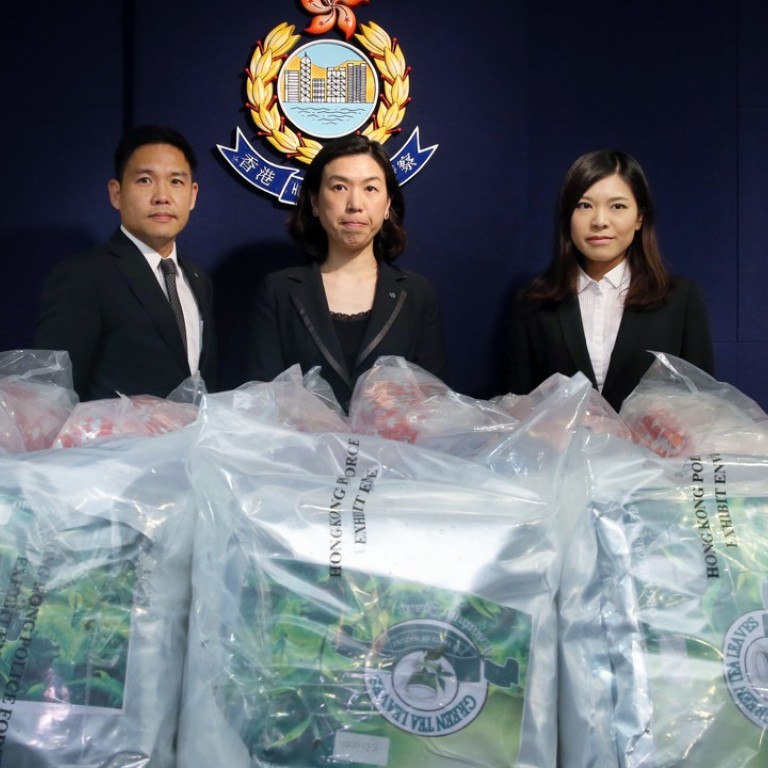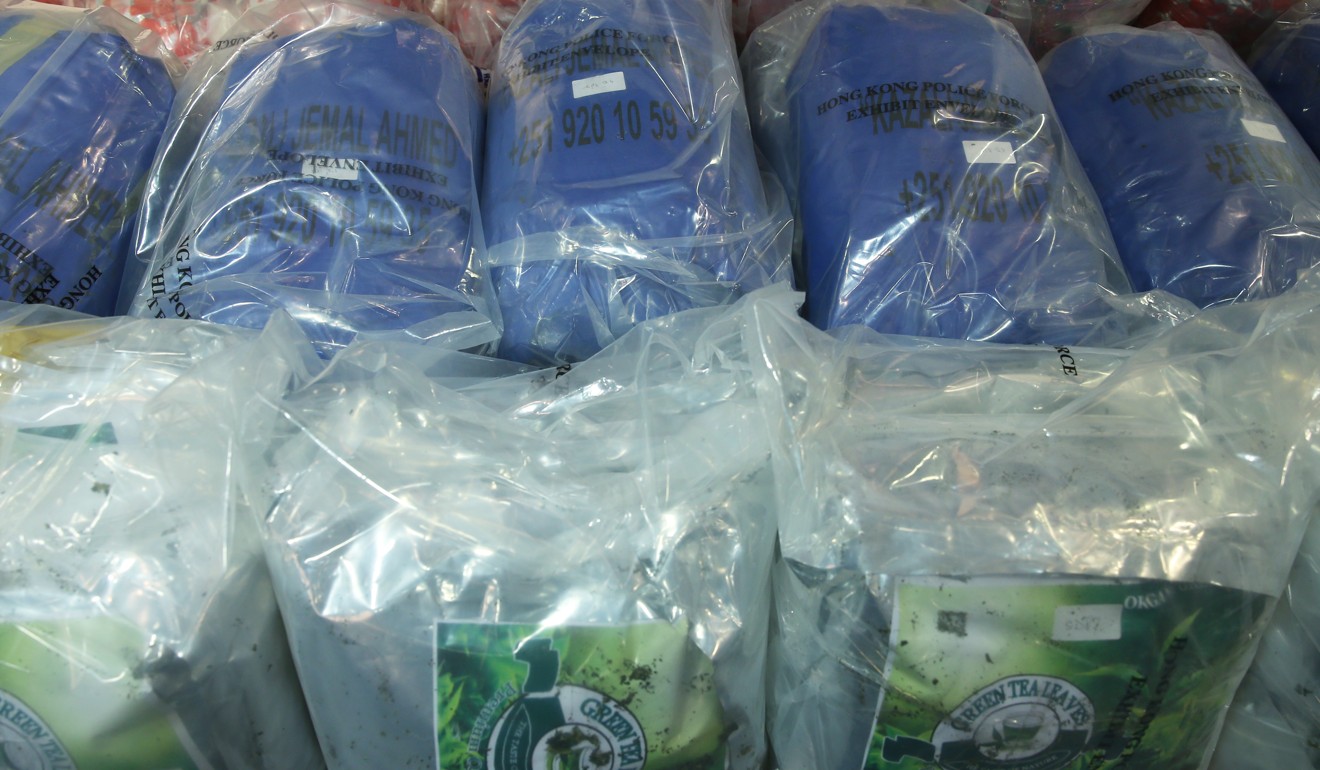
More than 3 tonnes of narcotic khat leaves seized this year by Hong Kong authorities
Consignments were destined for overseas but police and customs say there is no evidence city has become a transit point for drugs
More than 3 tonnes of the stimulant khat were seized by Hong Kong police and customs in several operations this year, authorities said on Wednesday.
That amount, for the year so far, is more than three times that for the whole of last year.
Khat, which is chewed in leaf form, can be consumed as a stimulant which causes hallucinations and delusion.
Since May this year, police have seized 1.11 tonnes of leaves, worth HK$6.4 million on the black market, in three raids. And the Customs and Excise Department reported confiscating 2.26 tonnes of leaves in the first nine months of the year.
According to acting senior superintendent Ng Wing-sze of the Narcotics Bureau, the force’s three seized consignments were smuggled into the city from Ethiopia, Africa.

Ng said the khat was not intended for consumption in the city. She added: “The final destinations are the US, Canada and other countries.”
According to the force, police made no such seizures before 2017.
Ng said: “There is no evidence to suggest Hong Kong has become a drug transit point.”
Cheung Pak-kit, chief inspector of the bureau, said drug dealers always explored different smuggling routes and methods to avoid detection.
The three consignments were discovered after police received information from local logistics companies.
In May, police raided a mini storage centre in To Kwa Wan and confiscated 260kg of khat leaves.
The second consignment was uncovered last week when police raided two storage centres in Cheung Sha Wan and Western District, where they seized 760kg of leaves.
‘Bath salt’ seizures in Hong Kong increase sixfold as traffickers try to send drug to United States
The latest case occurred on Tuesday when another 90kg of khat leaves was seized in a storage centre in Central.
The three consignments were declared as green tea leaves and clothes on the manifests, while being mailed to Hong Kong from Ethiopia.
“The senders are different. We are still investigating whether the three cases are linked and whether the same syndicate is behind this,” Cheung said.
So far, no one has been arrested and an investigation is under way.
Hong Kong customs’ even bigger khat haul, of 2.26 tonnes for the year so far, came in lots of separate cases.
Last year customs officers seized 1.03 tonnes of khat leaves. In 2015 and 2014, the figures were 510kg and 6.44 tonnes respectively.
The department agreed with police, that the seizures did not signal that the city was a drug transit centre, adding that it would continue “rigorous enforcement against transnational drug trafficking”.
Khat is a flowering evergreen plant native to East Africa and the Arabian peninsula. Its leaves contain traces of cathinone and cathine – classified as controlled substances under the Dangerous Drugs Ordinance. The leaves have been used for centuries in the Middle East, where people chew them as a stimulant.
Ng warned about health hazards from consuming the addictive leaves.
“They can cause delusion and hallucination and even suicidal tendencies. They are easily addictive and harmful to health as they can cause high blood pressure and an increased heart rate,” she said.
She said police would keep close contact with local logistics companies and exchange intelligence with overseas law enforcement agencies to fight such smuggling activities.

